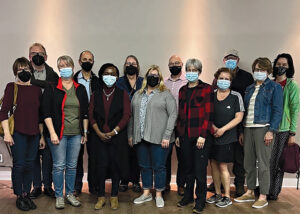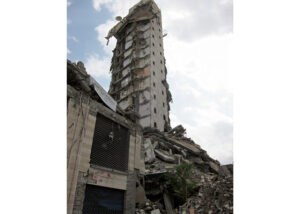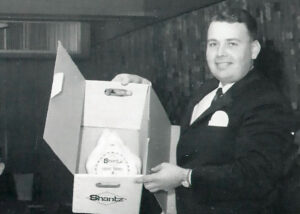Last year I wrote about Advent as a time of pregnant waiting, and of the way that Mary exemplifies mothering as the embodied practice of hospitality, fulfilling the biblical call to welcome the stranger (Lev. 19:33-34, Matt. 25, etc.) You can read “Making space for the stranger” here.
Today, I’m reflecting on Jesus as a refugee.
Robert Lentz explains his icon, “The Christ of Maryknoll,” portraying Christ as a Central American migrant to the U. S.
Welcoming the stranger is one of my favourite recurring images in the Bible. I find it full of rich possibilities for bridging the various ways we are estranged and divided from one another: across gendered, racial, ethnic, sexual, economic, education, ability, and opinion-based divides. Through this call, we approach a unity not based on sameness but, more interestingly, on particularity and difference.
When Leviticus 19 speaks about loving the stranger as yourself, “for you were [strangers] in the land of Egypt” (Lev. 19:33-34, NRSV), it is clearly another way of articulating Jesus’ call to love one’s enemies and neighbours alike, to make space for enemies to become neighbours and friends.[1]
But aside from its evocative metaphorical possibilities, welcoming the stranger is also, of course, a biblical call which I believe we should take literally! In the Bible, “strangers” or “aliens” or “resident aliens” were outsiders or “foreigners” who came to live among the people of Israel—in the present day, we call them immigrants, newcomers, migrants, or—that’s right—refugees.
God’s call to love and welcome the stranger or alien, an idea linked with the prophets’ central concern of care for widows and orphans, actually spans the Hebrew and Christian scriptures. The prevalence of this idea in the Bible (I counted 47 references!) shows that its importance as part of the love of God and neighbour can’t really be overstated.[2]
Of course, there is also a refugee family at the centre of our thoughts during Advent and Christmas: Mary, Joseph, and the infant Jesus were first displaced from Nazareth and rendered homeless in Bethlehem, at the mercy of imperial bureaucracy (Luke 2). Afterwards, they fled as refugees to Egypt, to escape Herod’s brutal, infanticidal violence (Matt. 2). Feminist theologian Tina Beattie speaks of Mary as having “been on a spiritual and physical journey with her sisters into the lonely birthing places of the poor, into the wilderness of the refugee. She had visited the world of women’s struggle and pain, and she would do so again.”[3]
According to a friend of mine who has worked with Mennonite Central Committee in Egypt, there is a pride among Egyptians that they are the ones who offered sanctuary to the infant Jesus and his parents when they were refugees—a pride much like what we Canadians are feeling these days as planeloads of Syrian refugees arrive in our country to a warm welcome, even to embraces from our new prime minister and other government leaders.
Of course, before we get too smug, we must remember that some of the bombs they’re fleeing from came from Canadian fighter jets in Syria and Iraq. We must remember those who are refugees in other places in the world which are “less newsworthy” according to our media. We must remember those in our own country who are living like refugees, either without homes in our cities or on one of the over one hundred First Nations reserves without access to clean water. I think especially of Shoal Lake 40 First Nation, the source of the city of Winnipeg’s water but itself under a boil-water advisory for the past 18 years. That community is only now beginning to get the resources to address this problem, which it shares with refugee camps around the world.[4]
So, no, our work isn’t done, nor is it uncomplicated. Even our offer of hospitality to Syrian refugees represents just the beginning of a long, slow process of this place potentially becoming home for them, a process which won’t always be this euphoric or inspiring.
But for now, I affirm those who have committed to walk together with refugees and the genuine celebration surrounding our welcome of these newcomers into our midst. As a Christian, I find it deeply meaningful that so many churches are responding to the call to see the face of Christ, himself a child-refugee, in the faces of refugees today, much like in Robert Lentz’s striking icon in the video above.
So as we come to the end of Advent, in spite and in the midst of the messiness of it all, I find myself hopeful to see so many putting into practice Jesus’ words from Matthew 25: “I was a stranger and you welcomed me. . . . Truly I tell you, just as you did it to one of the least of these who are members of my family, you did it to me.”
_______
[1] I’ve also written about welcoming the stranger as an approach to same-sex marriage: http://www.commonword.ca/ResourceView/43/17275.
[2] For references to the idea of loving the stranger or alien in the NRSV of the Bible (including the Apocrypha), see: Deut. 10:18-19; Job 29:16, 31:32; Ps. 146:9; Matt. 25:35, 38, 43-44; Rom. 12:13; Eph. 2:12, 19; Sirach 11:34, 29:26; Wisdom 19:13-15; Gen. 17:8, 21:23, 26:3; Exod. 6:4, 22:21, 23:9; Lev. 19:33-34, 23:22, 25:23, 35; Num. 15:14; Deut. 24:17-21, 26:11-13, 27:19; Jer. 7:6, 22:3; Ezek. 22:7, 29, 47:22-23; Zech. 7:10, Mal. 3:5, Eph. 2:12, 19. The book of Ruth also explores this theme, so that’s 48 references.
[3] Tina Beattie, Rediscovering Mary: Insights from the Gospels (Liguori, MO: Triumph Books, 1995), 85.
[4] Read recent news about Shoal Lake 40 First Nation here.






